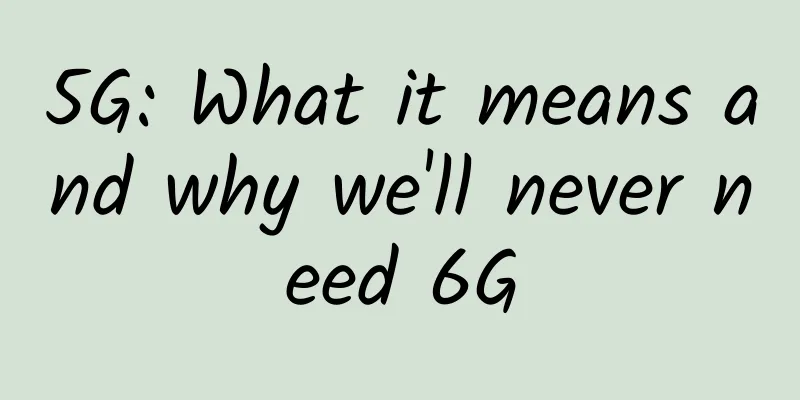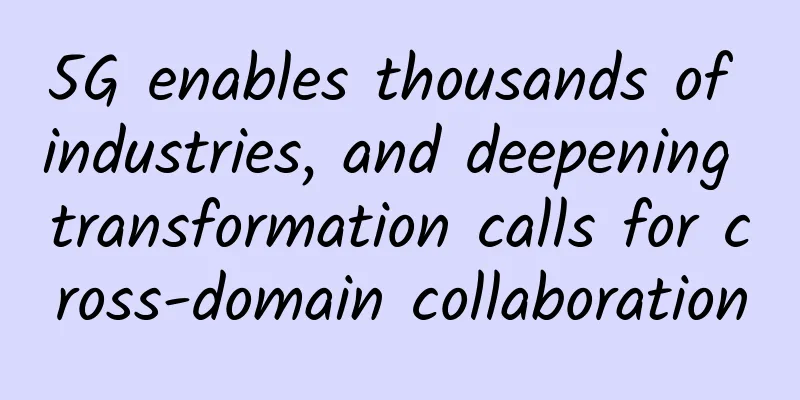5G: What it means and why we'll never need 6G

|
The launch of 5G isn’t all that far away, with rollout dates pegged between 2020 and 2022, and the technology has never been more needed. 5G network connectivity could be a major solution to current and future problems. 5G is not just about speed to provide services for the digital society, it also has various capabilities such as smart transportation links, immersive media, e-health and augmented reality overlays for the smart cities of tomorrow.
5G: What it means If 5G is to effectively meet the needs of the modern world, it will need to extend much further than our mobile phone network infrastructure. So, what does 5G mean:
5G will provide all of this while adhering to the golden formula that the cost of data transmission decreases at the same rate that the amount of data increases. Why there will never be 6G The Internet of Things (IoT) is growing so fast that every piece of technology will soon need to be wirelessly connected to the internet. This will include connected smoke detectors, washing machines, refrigerators, farm livestock sensors, thermostats, smart watches, sleep monitors, fitness bands, trash cans and street lights, as well as sensors that monitor traffic, air pollution, noise and parking. 5G will need these new innovations to create the greater value needed to ensure its success. Mesh networks will be used to allow devices to talk wirelessly to each other, and when needed, they will piggyback on each other as they find a path to the internet. Essential elements of the overall 5G vision will help free up bandwidth. Smaller macro cells will replace the large base stations currently in use, and these new base stations will use millimeter wave frequencies to transmit more data in a smaller frequency range. Compared to the coverage range of today's base stations, more millimeter wave base stations will need to be deployed, because the coverage range of these individual base stations is only a few hundred meters. Hundreds of MIMO (multiple-input, multiple-output) antennas will be used, all mounted in a small area, to send and receive multiple sets of data simultaneously at incredible speeds. It’s clear that 5G will be more than just a new mobile network infrastructure; it will use multiple forms of connectivity and, if done right, will never require 6G. |
<<: The next corner of the Internet of Things is not love, but 5G
>>: What will 5G rely on to disrupt data centers?
Recommend
DiyVM: Hong Kong CN2/US CN2 unlimited traffic VPS monthly payment starts from 50 yuan, Hong Kong server monthly payment starts from 499 yuan
Next, let me share some information about DiyVM, ...
Data center opening, electrical testers answer all your questions
Data center operators are committed to bringing t...
Practical knowledge: Types and advantages and disadvantages of wireless network topologies
Choosing the most appropriate network layout is c...
What is the Internet backbone and how does it work?
Tier 1 Internet Service Providers (ISPs) connect ...
Big news! The three major operators jointly released the "5G Message White Paper"
This article is reproduced from Leiphone.com. If ...
5G news is coming, and the national trial commercial use will start in mid-to-late October!
[[426617]] After much anticipation, the long-awai...
The decline in operators' ability to generate revenue will affect the rapid deployment of 5G
The report on the economic operation of the commu...
In addition to 5G licenses, other major network events also occurred in the first half of 2019
On June 6, 2019, my country's 5G license was ...
From darling to outcast, is Huawei's 5G journey in the UK really over?
On July 14, with the announcements made by Britis...
5G and the Future of Commercial Security Surveillance
Many commercial security surveillance networks ar...
Network as a Service (NaaS) is the future trend
Network as a Service (NaaS) refers to the ability...
How to deliver security as code: 11 tips to get started
Security as code and security by design are hot b...
The Future of Wi-Fi: Prepare Your Business for the Internet of Things
Connectivity is critical to nearly every aspect o...
A brief history of computer networks
The development of computer networks has come a l...
How 5G accelerates the development of the digital economy
Today, 5G construction is in full swing and gradu...









